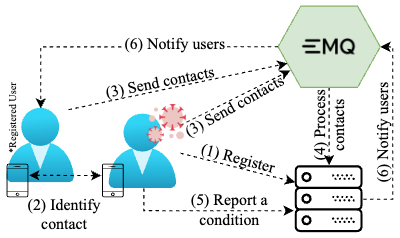MobETX: uma métrica de roteamento ciente da mobilidade para Internet das Coisas
The routing process in Internet of Things (IoT) is a key aspect when devices can move. It enables devices to communicate with each other, enhancing functionalities of everyday objects where they are attached. However, the mobility cause frequent topology changes turning the routing process a challenge. Most IoT’s routing protocols rely on a Link Quality Estimator (LQE) to weigh links and choose routes. The Expected Transmission Count (ETX) commonly is a good LQE for wireless links between static devices, but when devices move ETX fails. In this paper, we present Mobile Expected Transmission Count (MobETX) as a new metric to qualify multi-hop wireless links for mobile scenarios. MobETX keeps all features from ETX, but uses the devices’ mobility metrics to assist the routing process of choosing routes. In our experiments, the routing protocol by using MobETX is at least 5% better in package delivery than ETX in hard mobile scenarios and deliver > 98% of packets on static scenarios.
Please cite:
@inproceedings{sbrc,
author = {Gabriel Reis and Bruno Santos and Luiz Vieira},
title = {MobETX: uma métrica de roteamento ciente da mobilidade para Internet das Coisas},
booktitle = {Anais do XXXIX Simpósio Brasileiro de Redes de Computadores e Sistemas Distribuídos},
location = {Uberlândia},
year = {2021},
keywords = {},
issn = {2177-9384},
pages = {364--377},
publisher = {SBC},
address = {Porto Alegre, RS, Brasil},
doi = {10.5753/sbrc.2021.16733},
url = {https://sol.sbc.org.br/index.php/sbrc/article/view/16733}
}
Gabriel Reis and Bruno Santos and Luiz Vieira.
Contatcs: gabriel.requena@aluno.ufop.edu.br, bruno.ps@ufop.edu.br, lfvieira@dcc.ufmg.br
Founding agencies: CNPq/CAPES/FAPEMIG.





Leave a comment